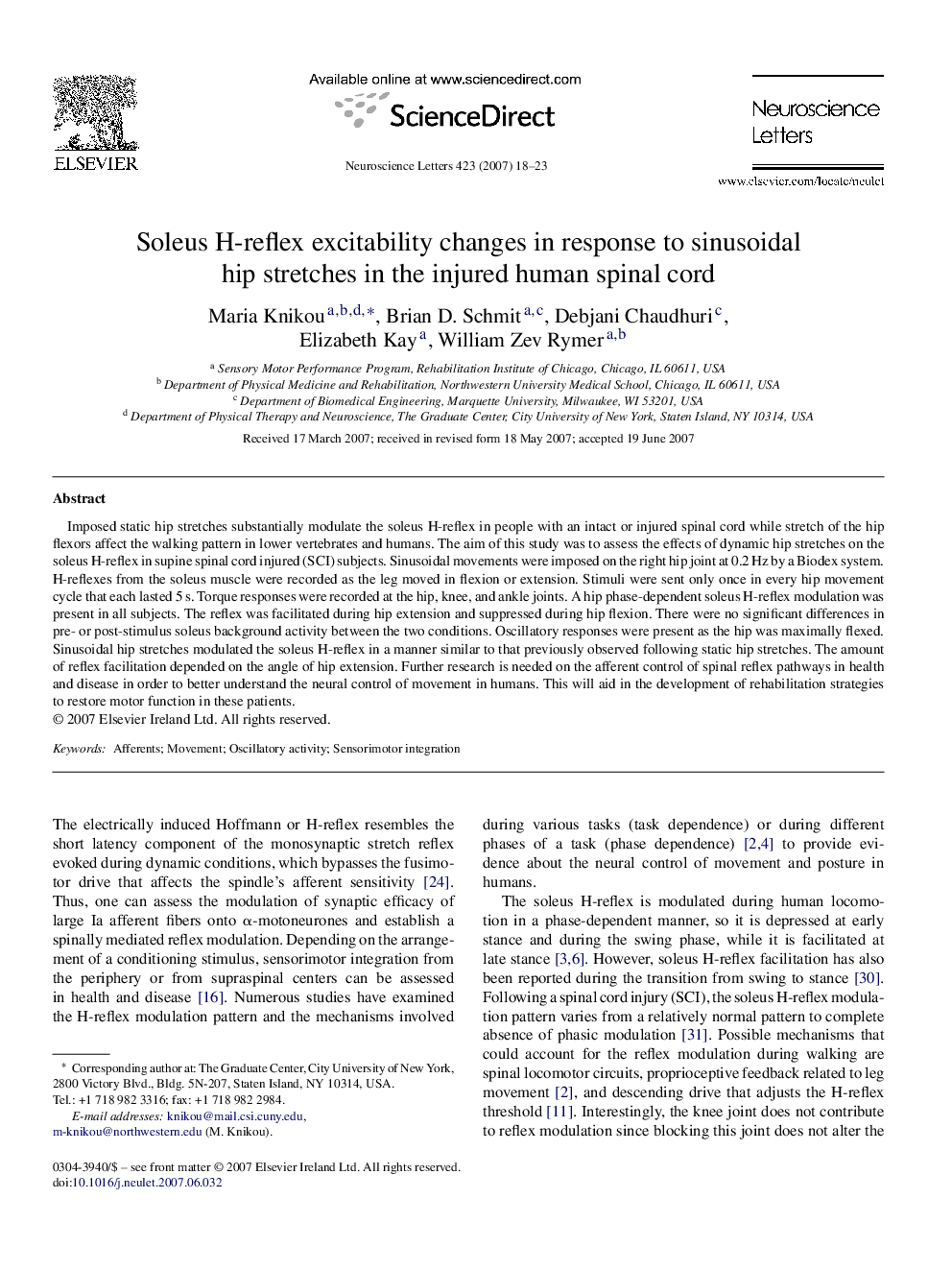| Article ID | Journal | Published Year | Pages | File Type |
|---|---|---|---|---|
| 4349344 | Neuroscience Letters | 2007 | 6 Pages |
Imposed static hip stretches substantially modulate the soleus H-reflex in people with an intact or injured spinal cord while stretch of the hip flexors affect the walking pattern in lower vertebrates and humans. The aim of this study was to assess the effects of dynamic hip stretches on the soleus H-reflex in supine spinal cord injured (SCI) subjects. Sinusoidal movements were imposed on the right hip joint at 0.2 Hz by a Biodex system. H-reflexes from the soleus muscle were recorded as the leg moved in flexion or extension. Stimuli were sent only once in every hip movement cycle that each lasted 5 s. Torque responses were recorded at the hip, knee, and ankle joints. A hip phase-dependent soleus H-reflex modulation was present in all subjects. The reflex was facilitated during hip extension and suppressed during hip flexion. There were no significant differences in pre- or post-stimulus soleus background activity between the two conditions. Oscillatory responses were present as the hip was maximally flexed. Sinusoidal hip stretches modulated the soleus H-reflex in a manner similar to that previously observed following static hip stretches. The amount of reflex facilitation depended on the angle of hip extension. Further research is needed on the afferent control of spinal reflex pathways in health and disease in order to better understand the neural control of movement in humans. This will aid in the development of rehabilitation strategies to restore motor function in these patients.
